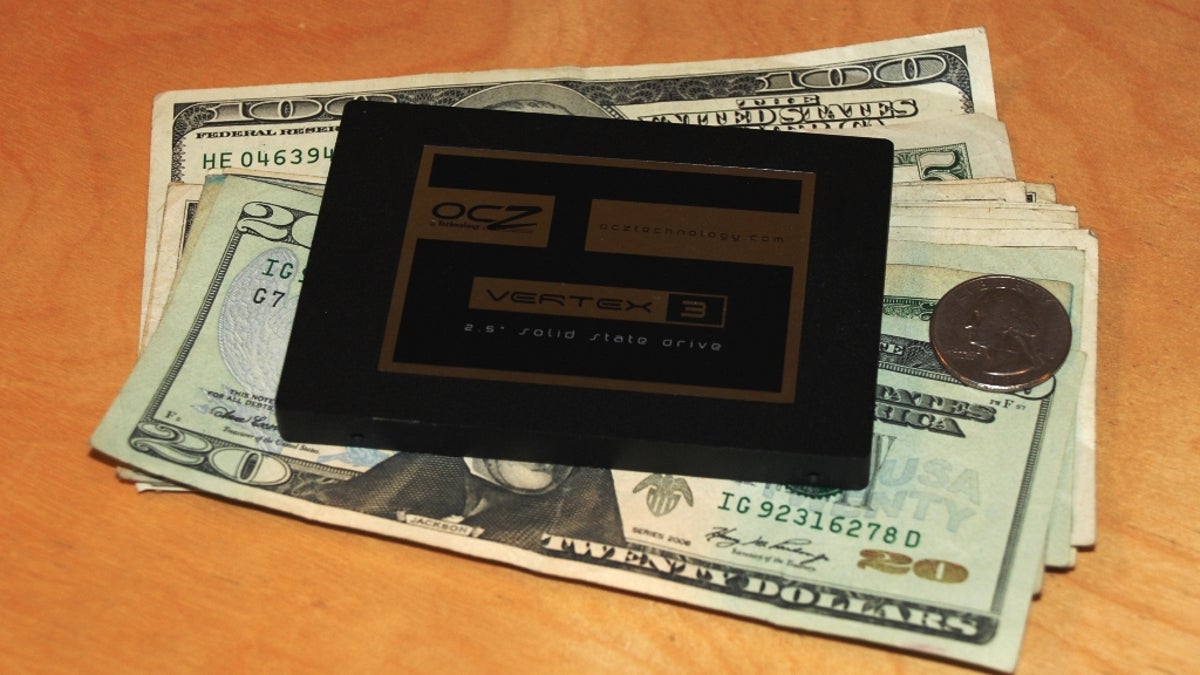Top small internal drives to usher in the new year in a big way
CNET editor Dong Ngo's pick of sub-$200 internal drives that make excellent investments for any computer.

New year, new resolutions.
If one of your resolutions is to get a better computer so you can be happier with your life, I'd suggest you double down on exercising, or better yet add eating healthy to the list, because chances are your computer is working just fine.
What you need might just be a new internal storage device and your computer will be as good as new, or maybe even better. This is especially true if you have a system (be it a laptop or desktop, running Macs or Windows) that's 3 or 4 years old and uses an SATA hard drive as its main internal storage device. Most existing computers fit this category, by the way.
That's because like all machines, the parts that move around a lot are those that tend to break the earliest and cause trouble. It's just physics; all moving parts are subject to wear and tear. In a computer, the hard drive is the one that moves the most by far. (For one that spins at 5,400rpm, which is considered "slow" among hard drives, the number of times it spins in a year is huge).
So, even if your computer seems to be working fine, after a few years, it might be a good idea to have the hard drive replaced. This can help prevent a sudden loss of data and, truer to the current topic, make the machine run faster. You can find out more about this here.
Following is a list of my top five internal drives, in no particular order, that would make a great replacement drive. They all cost slightly less than $200 each. While this is not a small amount, it sure is cheaper than getting a brand-new computer. And as I mentioned wear and tear, of the five, four of them are solid-state drives (SSDs) that don't have any moving parts.
All of of these drives support the latest SATA3 (6Gbps) standard, come in the 2.5-inch design, and are better suited for laptops since they have relatively small amount of storage space. They can also be used for desktops as the main drive hosting the operating system; in this case, you can get another hard drive (or keep the old one) as the secondary drive to have extra capacity.
This is the top-of-the-line SATA3 SSD that's not just fast but also really sleek-looking. In fact, it's sad that it's so sleek-looking since it's an internal hard drive that, once used, will be hidden away inside a computer's chassis. The Samsung 830 series also offers users the ability to turn its provisioning features on or off on the fly, making it the most flexible SSD on the market. The drive comes in many capacities, ranging from 64GB to 512GB, with the sweet-spot 128GB model costing as low as $198.
With the latest firmware update, the Crucial m4 offers great performance. The drive's 128GB capacity model also costs as low as $180, making it a good deal.
Speaking of a good deal, probably nothing can beat the OCZ Agility 3. Costing just $165 for the 128GB capacity, this SSD is among the most affordable on the market for a drive that supports SATA 3. The reason it costs so little is because it's supposed to be a "budget" lineup for OCZ, inferior to the
The OCZ Octane is the most expensive on this list; the 128GB version costs $199.99. However, it's a new breed of SSDs that uses OCZ's own Everest controller and is one of only a few SSDs on the market that offer up to 1TB of storage space. The drive offered very good performance in my testing in terms of application performance, boot-up, shutdown, and wake-up time.
The new 750GB Seagate Momentus XT is the only hard-drive-based storage on this list. But it's not a traditional hard drive. Instead, this is a hybrid drive that comes with 8GB of embedded high-speed SSD (twice that of the
The drive does need a few initial trials to "learn" what it should move to the SSD part, but after that, in my testing, it indeed offered the type of performance that no other traditional hard drive can. On top of that, you can also enjoy its larger amount of storage space. At a price as low as $194 for 750GB, the Momentus XT is the best deal on the market for those who don't mind having a drive that comes with moving parts but offers a taste of SSD performance.
To compare these products side by side, check out this link.

